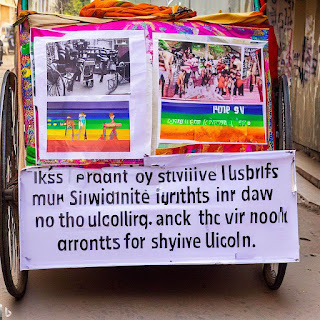WHY WE NEED COURT HEARING FOR EVEN MARRIAGE
The Most Innovative Things Happening With In Indian Why People Are So Homophopic
India is a country with a rich and diverse cultural heritage, where different religions, languages, and traditions coexist. However, when it comes to sexuality, India has a long history of homophobia, which means fear, hatred, or prejudice against people who identify as lesbian, gay, bisexual, transgender, queer, or intersex (LGBTQI+). Homophobia can manifest in various forms, such as discrimination, harassment, violence, stigma, or exclusion of LGBTQI+ people from social, economic, and political spheres. But how did India become a homophobic society? What are the historical and cultural factors that shaped the attitudes and behaviors of Indians toward LGBTQI+ people?
Therefore, it can be argued that homophobia in India is not a native or indigenous phenomenon, but rather a product of colonialism and modernization. The British colonizers imposed their Victorian morality and legal system on India, which criminalized homosexuality as an unnatural offense under Section 377 of the Indian Penal Code in 1861. This law was based on similar British laws that were enacted three centuries earlier to suppress sexual dissent and diversity in England. The British also propagated the idea that homosexuality was a disease or a perversion that needed to be cured or punished. They also erased or distorted the evidence of sexual diversity in Indian history and culture by censoring or misinterpreting texts and images.
The impact of colonialism on Indian society was profound and lasting. It created a sense of shame and guilt among Indians about their own sexuality and identity. It also reinforced patriarchal and heteronormative values that privileged marriage and procreation as the only acceptable forms of sexual expression. It also marginalized and stigmatized LGBTQI+ people as deviant or abnormal. Even after India gained independence in 1947, Section 377 remained in force until 2018, when the Supreme Court finally decriminalized consensual homosexual acts between adults. However, legal recognition does not necessarily translate into social acceptance or equality. LGBTQI+ people in India still face many challenges and barriers in accessing education, health care, employment, housing, justice, and dignity.
Homophobia in India is also influenced by other factors such as religion, caste, class, gender, media, and politics. Different religious groups may have different views on homosexuality based on their scriptures or doctrines. Some may be more tolerant or inclusive than others. However, most religions tend to uphold heterosexuality as the norm and condemn homosexuality as immoral or unnatural. Caste and class also play a role in shaping homophobia in India. LGBTQI+ people from lower castes or classes may face more discrimination or violence than those from higher castes or classes. Gender also affects homophobia in India. LGBTQI+ people who do not conform to gender stereotypes or expectations may face more harassment or abuse than those who do. Media also has a role in perpetuating or challenging homophobia in India. Media representations of LGBTQI+ people may be stereotypical,




Comments
Post a Comment